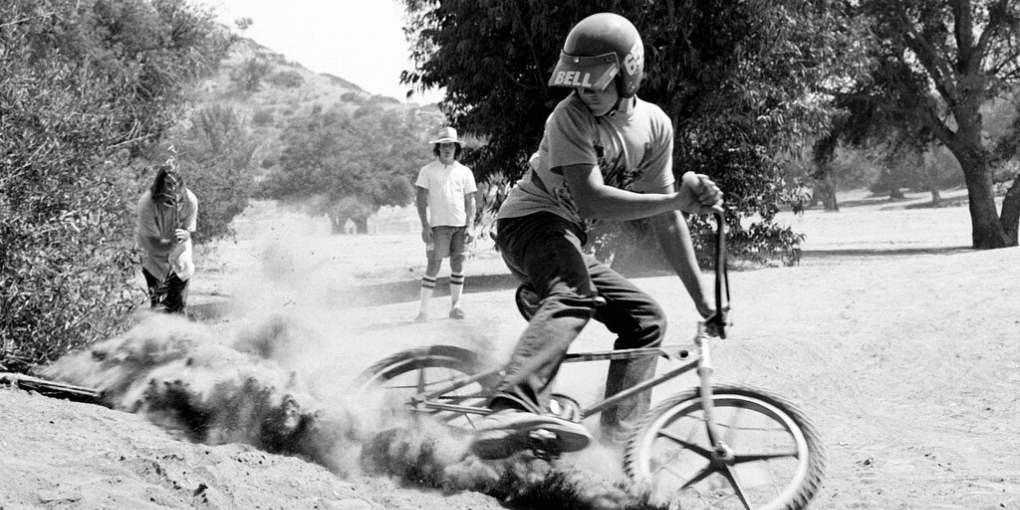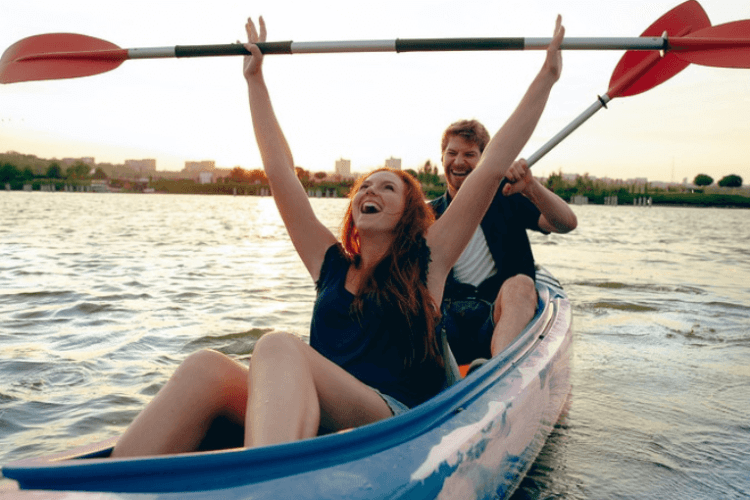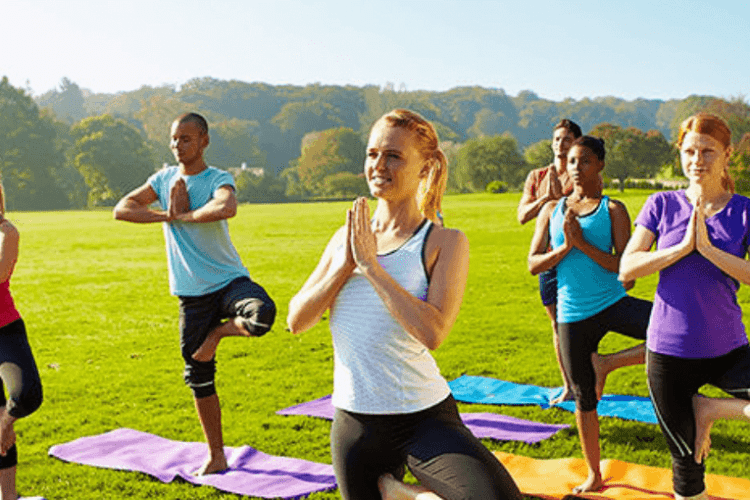The Secrets of BMX Freestyle: A Beginner’s Guide
Did you know?
BMX freestyle began in the 1970s when riders started performing tricks in empty swimming pools and skateparks? It quickly evolved into an adrenaline-fueled sport filled with jaw-dropping stunts and incredible athleticism.
Hey there! Have you ever seen those amazing riders doing cool tricks on their bikes and felt really excited?
Want to perform those tricks by yourself? Well, get ready to have some fun with BMX freestyle! It’s like dancing on two wheels, and everyone can join in.
Just Imagine, you are on a BMX bike, flying through the air, doing flips and spins like a superhero. Sounds cool, right? Well, it’s totally possible, and this guide will help you do it!
In this beginner’s guide, I am going to share the secrets of BMX freestyle. It’s like getting a special pass to the world of BMX fun.

Whether you’re new to biking or already know a bit, we’ve got everything you need to start your BMX adventure. So, get ready to put on your helmet, and let’s have an awesome time riding!
Understanding BMX Freestyle
Get ready to dive into BMX freestyle! Let’s start by understanding what it’s all about, where it came from, the different types like street and park riding, and what parts make up a BMX bike.
What is BMX Freestyle?
BMX freestyle is all about doing cool tricks and stunts on a special kind of bike called a BMX. It’s like showing off your best moves while riding and dancing around.
Where Did It Start?
BMX freestyle first started in the 1970s when riders began doing tricks on their bikes. It quickly became popular, and now people all over the world love doing BMX freestyle.
Different Types of BMX Freestyle
Street: Imagine riding your BMX bike around town and seeing stairs, rails, and benches. In street BMX, riders use these things to do tricks. They might jump down stairs, grind along rails, or balance on benches while doing cool moves.
Park: Imagine a special place just for BMX riders, filled with ramps, jumps, and other obstacles. That’s a BMX park! Riders use these ramps and jumps to show off their best tricks. They might soar through the air, spin around, or flip upside down.
Vert: Think of a giant U-shaped ramp called a halfpipe. In vert BMX, riders ride up and down this ramp, doing tricks high in the air. They might twist, turn, or even fly upside down before landing back on the ramp.
Flatland: Now, imagine a wide-open space with no ramps or jumps, just flat ground. That’s where flatland BMX happens. Riders use balance, coordination, and creativity to do tricks right on the ground. They might spin the bike, stand on the handlebars, or flip it around in amazing ways.
Parts of a BMX Bike
Frame: This is like the skeleton of the bike. It holds everything together and gives the bike its shape. Without a frame, the bike wouldn’t work!
Handlebars: These are the bars you hold onto while riding. They help you steer the bike and also give you something to grab onto when doing tricks.
Wheels: Every bike needs wheels to roll around, right? BMX bikes have smaller wheels compared to other bikes. These smaller wheels make it easier for riders to maneuver and do tricks.
Pegs: Pegs are like metal bars that stick out from the wheels. They’re used for certain tricks, like grinding on rails or ledges. Pegs give riders more options for showing off their skills and adding style to their moves.
Essential Gear To Get Started
Think of wearing your gear as getting ready to become a superhero on your bike!
Just like superheroes wear special outfits to stay safe on their adventures, wearing the right gear keeps you safe when you’re doing cool tricks.
It gives you the confidence to try new things without worrying too much about getting hurt.
What Gear Do You Need?
When you’re getting ready to ride your BMX bike, it’s really important to make sure you’re wearing the right gear to keep yourself safe. Here’s a breakdown of what you should have:
Helmet: This is probably the most important piece of gear. It protects your head if you happen to fall off your bike, which can happen sometimes when you’re trying out new tricks.
Knee and Elbow Pads: These are like shields for your knees and elbows. They’re there to make sure you don’t get scraped up or bruised if you take a tumble.
Gloves: Gloves might seem like a small thing, but they’re actually quite important. They give you a better grip on the handlebars, so you can steer your bike more easily. Plus, if you do fall, they help protect your hands from getting scratched or hurt.
Choosing the Right Clothes and Shoes
When you’re out riding your BMX, it’s a good idea to wear clothes that are comfy and let you move around freely.
Tight clothes might restrict your movements, so it’s best to go for something loose-fitting.
Also, try to avoid wearing anything too baggy that could get caught in your bike’s moving parts.
As for shoes, go for something strong with flat soles. This helps you grip the pedals better, so you have more control over your bike.
You don’t want your feet slipping off the pedals when you’re in the middle of doing a trick!
Choosing the Right BMX Bike
Get ready to pick your perfect BMX ride! Learn about the different types of bikes like freestyle, race, and dirt, and get tips on choosing the right one for your style and needs.
Different Types of BMX Bikes
There are a few different kinds of BMX bikes, each made for different types of riding:
- Freestyle: These bikes are perfect for doing tricks and stunts at places like skate parks or on the street.
- Race: Race bikes are built for going really fast around a track with jumps and obstacles.
- Dirt: Dirt bikes are made specifically for riding on dirt tracks and doing jumps.
How to Choose the Right Bike
When you’re picking out a BMX bike, it’s important to find one that fits you well. Here’s how to do it:
- Stand over the bike and make sure there’s a little bit of space between you and the top tube (the horizontal bar).
- Sit on the bike and see if you can touch the ground with your feet while sitting comfortably.
- Try out the handlebars to make sure they feel good and easy to hold onto.
- Think about what kind of riding you want to do the most. If you really enjoy doing tricks, then a freestyle bike might be the best choice for you. But if you’re more interested in racing, then a race bike would probably be better.
Basic Riding Techniques
Get set to ride like a champ! Here’s the details on basic BMX skills: how to stand and balance, pedal and brake, turn and carve, do bunny hops and manuals, plus handy tips for nailing each move.
Riding Stance and Balance
- When you’re riding, stand on your bike with your feet apart, about as wide as your shoulders.
- Keep your knees a little bent, not too straight, and your back nice and straight, like when you’re standing up tall.
- Make sure you’re not leaning too much to one side. Try to balance your weight evenly between both feet to stay steady.
Pedaling and Braking
- When you’re ready to start moving, use one foot to push down on the pedal, like pushing down on a step.
- To stop, use your hands to gently squeeze the brakes. It’s important to squeeze both brakes equally to stop smoothly without sliding.
Turning and Carving
- If you want to go a different direction, lean your body that way and turn the handlebars in the same direction.
- Try practicing smooth turns by leaning into the turn, like you’re leaning into a curve.
Bunny Hops and Manuals
- For a bunny hop, bend your knees and pull up on the handlebars while pushing down on the pedals to lift the bike off the ground. It’s like jumping with your bike!
- When you want to do a manual, lean back a bit and lift the front wheel off the ground while balancing on the back wheel. It’s all about keeping your balance just right.
Tips for Practicing
Start by practicing in a flat, open area where there’s nothing in your way.
Take your time and focus on learning one thing at a time. It’s okay to take it slow!
Don’t worry if you don’t get it right away. With practice, you’ll get better and better!
BMX Parks and Riding Spots
Did you know there are special places just for riding BMX bikes?
They’re called BMX parks, and they’re like playgrounds for BMX riders! You can find ramps, jumps, and other cool features to ride on.
If you’re not near a BMX park, don’t worry! You can still have fun riding your bike in places like skate parks, empty parking lots, or even just your neighborhood streets.
Tips for Riding Safely
When you’re at a BMX park or riding in public spaces, it’s important to follow some rules to stay safe and be respectful:
- Wearing Gear: Always wear your helmet and any other protective gear to keep yourself safe.
- Be Aware: Look out for other riders and people using the park or area where you’re riding.
- Wait Your Turn: If there are other riders, take turns using ramps or obstacles. It’s polite and safer for everyone.
- Street Riding: If you’re riding on the streets, follow traffic rules and watch out for cars. Being careful and respectful helps keep everyone safe.
Progressing in BMX Freestyle
Learning new tricks and getting better at BMX freestyle is all about practice! Here are some tips to help you improve your skills:
- Start with the basics: Master the simple tricks first, like bunny hops and manuals, before moving on to more advanced ones.
- Practice regularly: The more you ride your bike and try new tricks, the better you’ll get.
- Don’t be afraid to fall: Falling is part of learning. Just make sure you’re wearing your helmet and protective gear, and don’t give up if you fall down. Get back up and try again!
Where to Find Help
If you want some extra help with your BMX skills, there are lots of resources available:
- Online tutorials: You can find tons of videos online that show you how to do different BMX tricks step by step.
- Coaching: If you’re serious about getting better, you might consider taking lessons from a BMX coach or joining a riding group where you can learn from more experienced riders.
- Community forums: Joining online forums or social media groups for BMX riders can be a great way to connect with other riders, ask questions, and get advice.
Safety Tips and Injury Prevention
Before you start riding, it’s super important to think about safety. Here’s why:
- Wearing your helmet can protect your head if you fall off your bike.
- Knee and elbow pads can help prevent scrapes and bruises if you crash.
- Gloves give you a better grip on the handlebars and protect your hands.
Tips for Staying Safe
Here are some practical tips to help you avoid injuries while riding:
- Always wear your helmet and other protective gear, like knee and elbow pads.
- Check your bike before riding to make sure everything is working properly, like the brakes and tires.
- Ride in safe areas, like BMX parks or designated bike paths, and be aware of your surroundings.
- Learn how to fall safely: Try to roll with the fall and protect your head and limbs.
Conclusion
Now that you’ve learned the secrets of BMX freestyle, it’s time to hit the streets and parks with confidence!
Remember to wear your safety gear, practice your skills, and most importantly, have fun on your BMX journey.
Don’t hesitate to share your experiences and connect with other riders in the vibrant BMX community!
FAQs
BMX Freestyle is like dancing on two wheels! It's when riders perform cool tricks and stunts on special bikes called BMX. You get to show off your best moves while riding around.
BMX Freestyle started in the 1970s when riders began trying out tricks in empty pools and skateparks. It grew popular as people started doing more daring stunts and showing off their skills.
BMX Freestyle comes in different flavors! There's street riding, where you use urban stuff like stairs and rails for tricks.
Then, there's park riding with ramps and jumps, vert with big ramps, and flatland with ground tricks.
To ride safely, you'll need a helmet to protect your head, knee and elbow pads to avoid scrapes, and gloves for better grip. Wear comfy clothes and sturdy shoes, too.


